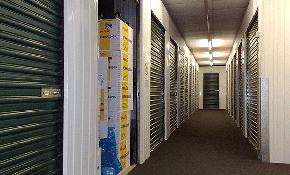As discussed in our last blog, the biggest threat to the U.S. economic recovery, and therefore the commercial real estate recovery, is the “fiscal cliff,” which encompasses the expiration of the Bush-era tax cuts as well as mandated federal spending cuts scheduled to take effect at the beginning of 2013. Left unchecked, the combination could deliver a blow to the U.S. economy equivalent to 4 percent of GDP. One can only assume or at least hope that the severity of the potential impact to the global economy will motivate lawmakers to act in a different and more progressive manner than the failed handling of the U.S. debt ceiling, which led to the downgrade of the country’s financial rating last year. The bottom line is that the already fragile recovery would most likely stall out altogether, potentially turning into an economic contraction, if the full impact of significant tax hikes and spending cuts occur simultaneously. While it appears that at least a short-term extension will likely follow the political elections, a substantive strategy to address these issues will evolve over time.
Assuming Congress averts the worst-case scenario for the better part of 2013, the Fed’s implementation of QE3 should result in measurable support for commercial real estate, directly and indirectly, for several reasons. To start, the Fed acted on the heels of the European Central Bank’s announcement of its own unlimited bond buying program to back stop Europe’s debt crisis and fight its current recession. The combination of these two complementary actions should go a long way to reduce the uncertainty that has plagued corporate sentiment around the world. From a tactical standpoint, the Fed will continue to foster a low interest rate environment by targeting tangible improvement in the housing sector recovery and supporting U.S. exports (by keeping the value of the dollar low) as stated goals. Exports remain a pillar of support to the economic recovery, accounting for approximately 14 percent of GDP and contributing to the 174,000 manufacturing jobs created over the past year. Housing would also be a welcome newcomer as a driver of the expansion. Together, these two sectors alone should improve job growth momentum over the next few months, especially as soon as a long-term, or even temporary, resolution to our broad fiscal concerns is announced and U.S. companies have greater clarity about current conditions and future expectations. More jobs will help accelerate the pace of occupancy gains, especially in the retail, industrial and office sectors. The apartment market remains robust thanks to solid levels of demand.
Fed actions are also aimed at moving capital out of safety and into equities, real estate and other forms of investment. The stock market already reflects this trend and the movement of capital into Class B and B- assets as well as secondary markets reflects an expanded level of risk tolerance in the commercial real estate arena. Extremely low interest rates, competitive returns vs. alternative investments, coupled with the rise in lending sources are set to fuel stronger sales activity and, in turn, rising values. Improved valuation and broadening buyer demand are already helping bring more inventory to the market as many properties that could not trade or be refinanced are now slowly breaking out of the log jam of the past three years. That said, lenders and buyers still adhere to high underwriting standards with caution and some skepticism with regard to tertiary markets, locations and properties.
These trends will create a competitive bidding environment in secondary locations and lower-tier properties, which had been overlooked by investors targeting core, low-risk assets in the initial stages of the recovery during 2010 and 2011. Caution and realistic operating assumptions remain requisite to success, especially as more assets in less-transparent markets generate multiple bids. Broad hesitation or absence of a clear strategy will be costly as yields in secondary and even tertiary markets compress.
Hessam Nadji is senior vice president and managing director of Marcus & Millichap Real Estate Investment Services. He is also the managing director of Institutional Property Advisors, Marcus & Millichap’s special division designed to serve the unique needs of institutional and major private multifamily investors. Contact him at [email protected].

















 Copyright © 2024 ALM Global, LLC. All Rights Reserved.
Copyright © 2024 ALM Global, LLC. All Rights Reserved.